According to the National Gardening Association, 35% of American households now grow their own food, marking a 200% increase since 2008. If you’re ready to join this growing movement, you’ll find that starting a garden doesn’t require extensive expertise or a large space. Whether you have a spacious backyard or just a few containers on your balcony, these ten beginner-friendly plants can transform your space into a thriving garden while building your confidence as a new gardener.
Contents
- 1 Foolproof Basil: A Kitchen Essential
- 2 Marigolds: Your Garden’s Cheerful Defenders
- 3 Cherry Tomatoes: Sweet Success in Small Packages
- 4 Mint: The Unstoppable Herb
- 5 Zinnias: Colorful Blooms for Every Season
- 6 Bush Beans: Quick and Easy Vegetables
- 7 Rosemary: A Mediterranean Survivor
- 8 Sunflowers: Towering Giants for Beginners
- 9 Lettuce: Fast-Growing Salad Greens
- 10 Lavender: The Low-Maintenance Beauty
Foolproof Basil: A Kitchen Essential
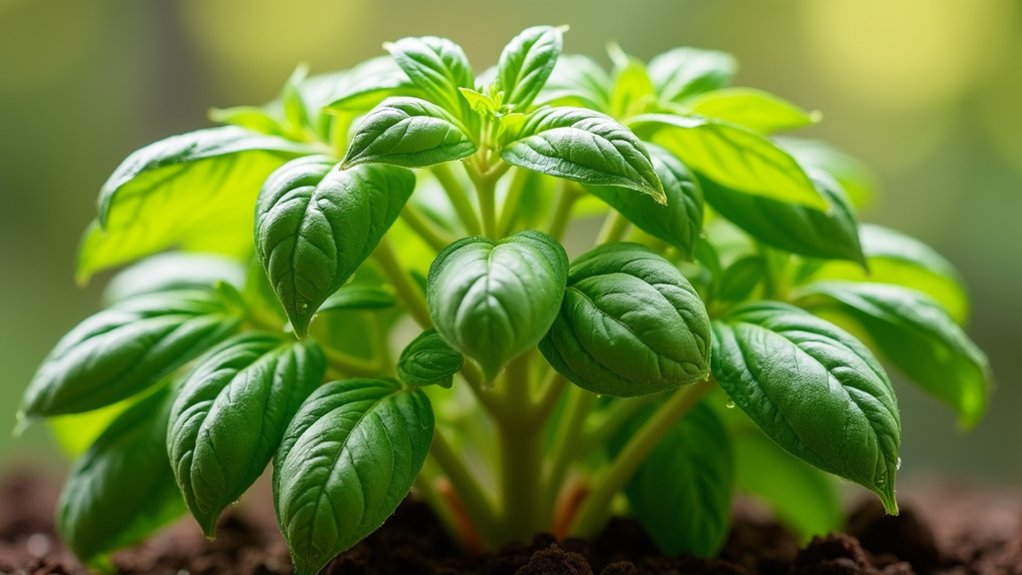
Basil is a versatile aromatic herb with bright green, tender leaves that add fresh flavor to countless dishes. This Mediterranean native grows in compact, bushy formations, reaching heights of 12-24 inches, with varieties displaying leaves ranging from small and delicate to large and ruffled.
The plant produces small white or purple flower spikes when mature, though most gardeners harvest before flowering to maintain optimal leaf flavor.
- Light: Full sun, minimum 6 hours daily
- Water: Consistent moisture, water when top inch of soil feels dry
- Soil: Well-draining, rich organic soil with pH 6.0-7.0
- Temperature: 70-80°F (21-27°C)
- Spacing: 12-18 inches between plants
- Container depth: Minimum 6 inches
- Fertilizer: Light feeding with balanced organic fertilizer monthly
Regular pruning is essential for maintaining a healthy, productive basil plant. Pinch off the top sets of leaves once the plant reaches 6 inches tall to encourage bushier growth and prevent early flowering.
Harvest leaves from the top down, removing stem tips just above a set of leaves to promote new growth. Remove any flower buds immediately to extend the growing season and prevent the leaves from becoming bitter.
During humid periods, ensure good air circulation around plants to prevent fungal diseases.
Marigolds: Your Garden’s Cheerful Defenders
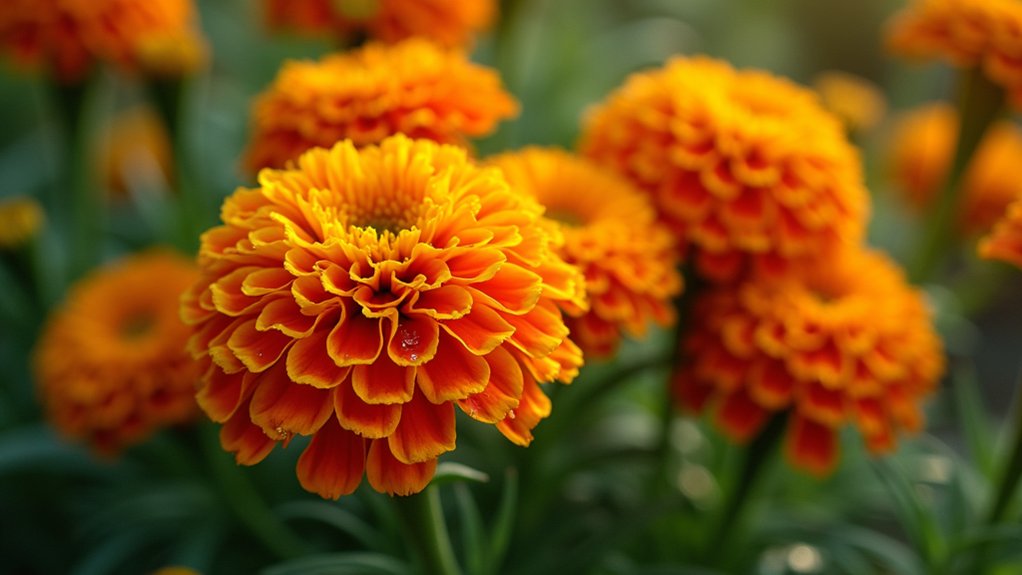
Marigolds are vibrant, sun-loving annual flowers that serve as both ornamental plants and natural pest deterrents in the garden. Their distinctive ruffled blooms come in warm shades of yellow, orange, and red, growing on sturdy stems with deep green, finely divided leaves.
These hardy plants not only add cheerful pops of color to borders and containers but also help protect neighboring plants by repelling harmful insects while attracting beneficial pollinators.
- Light: Full sun (6-8 hours daily)
- Water: Moderate watering; allow soil to dry slightly between waterings
- Soil: Well-draining, moderately fertile soil
- Temperature: 70-75°F (21-24°C) for optimal growth
- Spacing: 6-12 inches apart, depending on variety
- Planting Time: Spring, after last frost
- Hardiness Zones: 2-11
To maintain healthy marigolds throughout their growing season, remove spent blooms (deadheading) regularly to encourage continuous flowering and prevent seed formation.
Trim away any yellowed or damaged foliage to maintain plant appearance and prevent potential disease spread. While marigolds are generally disease-resistant, avoid overhead watering to prevent fungal issues, and ensure adequate air circulation between plants by maintaining proper spacing.
Cherry Tomatoes: Sweet Success in Small Packages
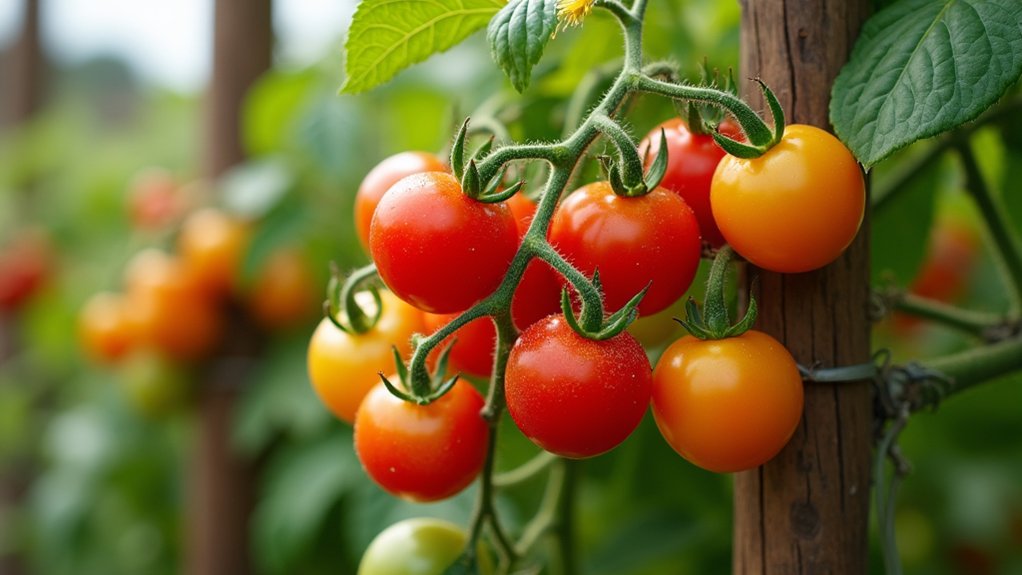
Cherry tomatoes are compact, prolific plants that produce small, round fruits ranging from marble to golf ball size in vibrant red, yellow, or orange hues. These sweet, bite-sized tomatoes grow in clusters and are perfect for container gardening or small spaces, making them an ideal choice for beginning gardeners.
Their determinate varieties stay naturally bushy, while indeterminate types can vine up to 6 feet tall.
- Full sun exposure (6-8 hours daily)
- Well-draining, nutrient-rich soil with pH 6.0-6.8
- Consistent moisture, watering deeply when top inch of soil feels dry
- Spacing 24-36 inches between plants
- Temperatures between 65-85°F (18-29°C)
- Plant after all danger of frost has passed
- Regular fertilizing with balanced, organic fertilizer
Regular pruning of suckers (small shoots between branches and main stem) helps maintain plant shape and improves fruit production.
Support growing vines with stakes or cages installed at planting time to prevent stem damage. Monitor for signs of blight or leaf spot diseases, maintaining good air circulation between plants and avoiding overhead watering.
Harvest fruits when fully colored but still firm, picking frequently to encourage continued production throughout the growing season.
Mint: The Unstoppable Herb
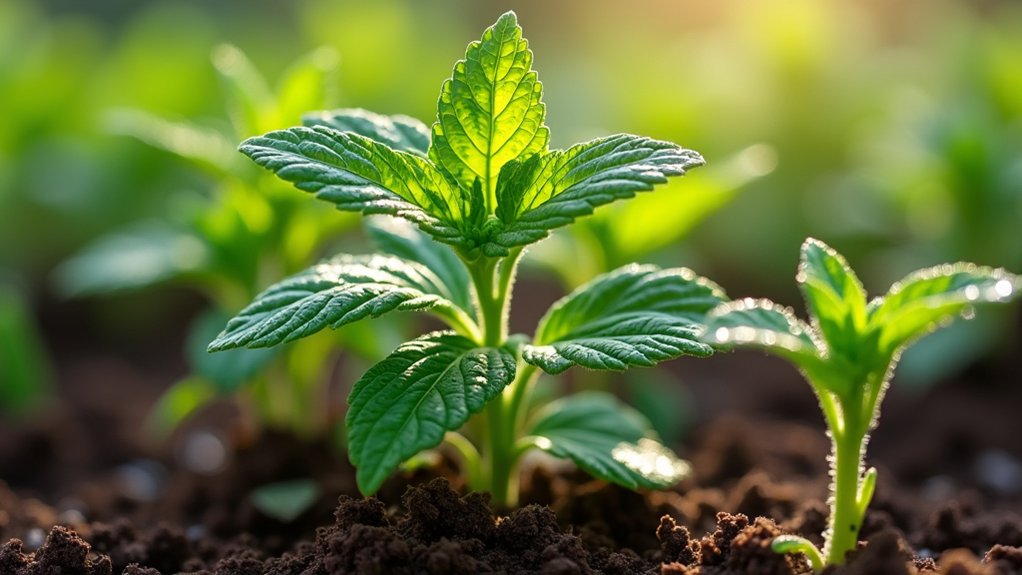
Mint is a vigorous perennial herb characterized by its square stems, aromatic leaves, and spreading growth habit. The bright green, toothed leaves grow in opposite pairs and release their signature refreshing scent when brushed or crushed.
While there are many varieties of mint, including peppermint and spearmint, all share the plant’s notorious ability to spread rapidly through underground runners called rhizomes, making it both a blessing and potential challenge in gardens.
Growing Conditions:
- Light: Partial to full sun, though tolerates some shade
- Water: Regular watering; keeps soil consistently moist but not waterlogged
- Soil: Rich, well-draining soil with pH 6.0-7.0
- Temperature: Hardy in zones 3-11
- Space: Plant 18-24 inches apart
- Container depth: Minimum 12 inches
To prevent mint from taking over your garden, grow it in contained spaces or submerged pots within garden beds. Regular harvesting encourages bushier growth and prevents flowering, which can reduce leaf flavor.
Trim back the plant by one-third in late summer to promote fresh growth, and divide crowded plants every 2-3 years in spring or fall to rejuvenate them. Remove any yellowed or damaged leaves promptly to maintain plant health and prevent disease spread.
Zinnias: Colorful Blooms for Every Season

Zinnias are vibrant annual flowers that bring an explosion of color to any garden with their daisy-like blooms ranging from white and yellow to deep purple and red.
These hardy plants produce single, double, or semi-double flowers on sturdy stems, growing anywhere from 6 inches to 4 feet tall depending on the variety. Their long-lasting blooms make excellent cut flowers and are particularly attractive to butterflies and pollinators, making them a dynamic addition to both ornamental and pollinator gardens.
- Light: Full sun (6-8 hours daily)
- Soil: Well-draining, fertile soil with pH 5.5-7.5
- Water: Moderate watering at soil level; about 1 inch per week
- Temperature: Warm conditions, 74-84°F (23-29°C)
- Spacing: 6-18 inches apart, depending on variety
- Planting time: After last frost in spring
Regular deadheading of spent blooms encourages continuous flowering throughout the season and prevents self-seeding.
To promote bushier growth and more flowers, pinch back young plants when they reach 6-8 inches tall. While zinnias are generally disease-resistant, avoid overhead watering to prevent powdery mildew, and ensure good air circulation between plants.
Applying a layer of mulch helps retain moisture and suppress weeds, though be careful not to pile it against the stems.
Bush Beans: Quick and Easy Vegetables
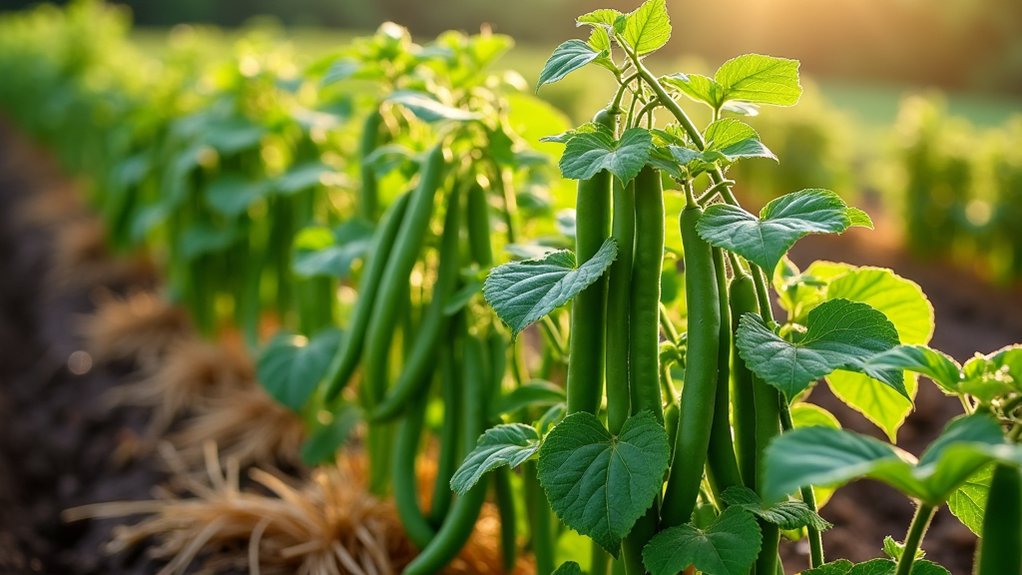
Bush beans are compact, self-supporting vegetable plants that typically grow 1-2 feet tall and produce tender green pods perfect for beginners. Unlike pole beans, these varieties don’t require trellising and produce an abundant harvest within 50-60 days of planting. The plants develop clusters of small white or purple flowers before setting pods, which grow to about 4-6 inches long when ready for harvest.
- Full sun (6-8 hours daily)
- Well-draining, fertile soil with pH 6.0-6.8
- Consistent moisture, about 1 inch of water weekly
- Soil temperature of 70-80°F for germination
- Spacing of 4-6 inches between plants
- 2-inch planting depth
- No tolerance for frost or cold conditions
Regular harvesting is key to maintaining continuous production – pick pods when they’re young and tender, before seeds become visible through the pod.
Remove any diseased or yellowed leaves promptly, and apply a layer of mulch around plants to retain moisture and prevent soil-borne diseases from splashing onto leaves.
While bush beans are relatively pest-resistant, monitor for bean beetles and remove them by hand or treat with insecticidal soap if necessary.
Rosemary: A Mediterranean Survivor
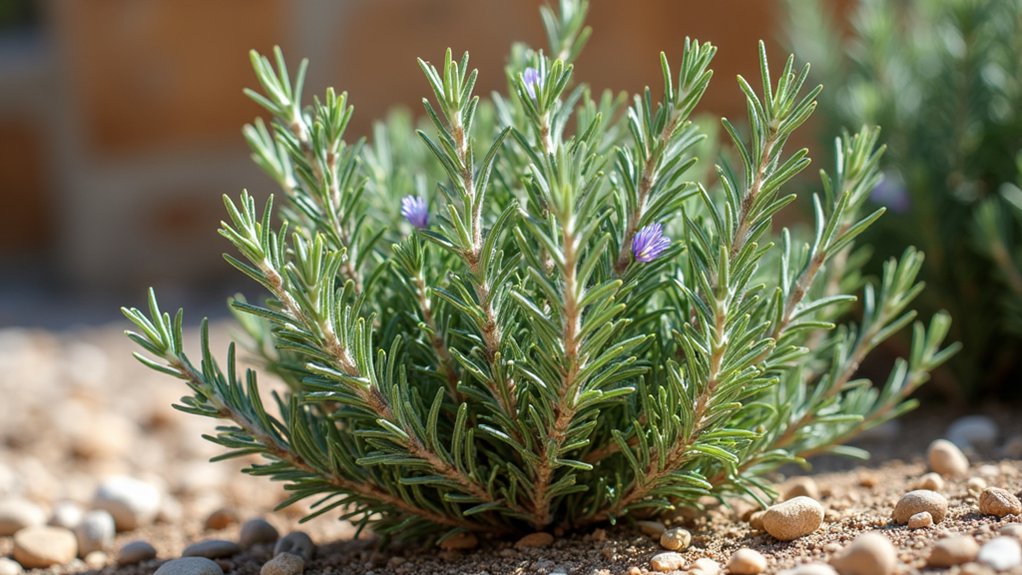
Rosemary is a hardy evergreen herb that showcases needle-like leaves and produces small blue or purple flowers. Native to the Mediterranean region, this aromatic plant grows as an upright shrub that can reach heights of 4-6 feet, featuring woody stems and dense foliage with a strong, distinctive pine-like fragrance.
Its sturdy nature and dual purpose as both a culinary herb and ornamental plant make it an excellent choice for novice gardeners.
- Light: Full sun, minimum 6-8 hours daily
- Soil: Well-draining, sandy or loamy soil with pH 6.0-7.0
- Water: Drought-tolerant; water when top 1-2 inches of soil feels dry
- Temperature: Thrives in warm conditions, hardy in zones 7-10
- Spacing: 2-3 feet between plants
- Container size: Minimum 12 inches deep with drainage holes
Regular pruning is essential to maintain rosemary’s shape and prevent woody, leggy growth. Trim the stems back by one-third after flowering, and shape the plant throughout the growing season to encourage bushiness.
Remove any dead or yellowing branches promptly, and avoid over-fertilizing as rosemary prefers lean soil conditions. During winter months in colder regions, move container plants indoors near a bright window and reduce watering frequency while maintaining good air circulation to prevent powdery mildew.
Sunflowers: Towering Giants for Beginners
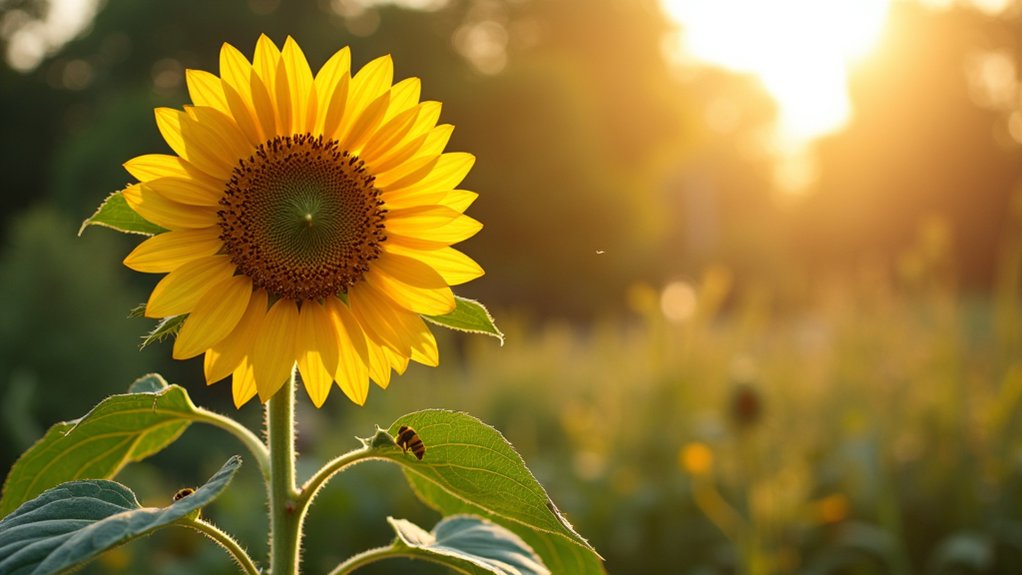
Sunflowers are iconic garden plants that command attention with their massive blooms and impressive heights, making them perfect for beginner gardeners. These annual flowers feature large, daisy-like flower heads that can reach up to 12 inches in diameter, sitting atop sturdy stalks that can grow anywhere from 3 to 15 feet tall, depending on the variety.
Their vibrant yellow petals surrounding dark centers not only create stunning visual displays but also attract beneficial pollinators and eventually provide seeds for birds and humans alike.
- Light: Full sun (6-8 hours daily)
- Soil: Well-draining, fertile soil with neutral pH (6.0-7.5)
- Water: Moderate watering; about 1 inch per week
- Spacing: 6 inches apart for smaller varieties, 2-3 feet for larger ones
- Planting time: Spring, after last frost
- Temperature: Soil temperature of at least 50°F (10°C)
- Depth: Plant seeds 1-2 inches deep
To maintain healthy sunflowers, stake tall varieties early to prevent wind damage and remove any yellowing lower leaves to discourage disease.
Regular deadheading of spent blooms encourages continued flowering in branching varieties, though single-stem types will only produce one flower.
If growing for seed production, protect developing seed heads from birds with mesh bags or netting, and harvest when the backs of the flower heads turn yellow-brown and seeds are plump and loose.
Lettuce: Fast-Growing Salad Greens
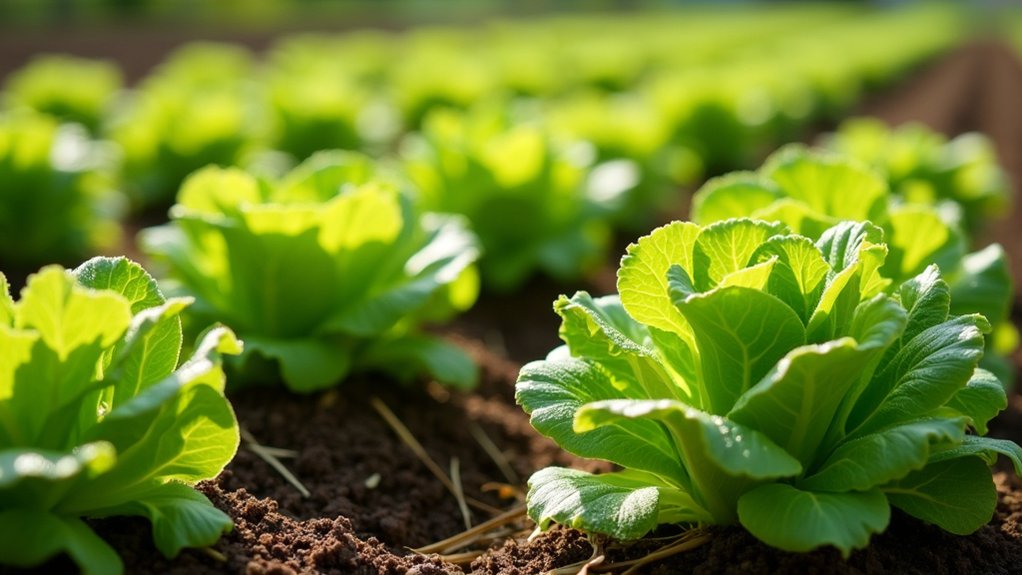
Lettuce is one of the most rewarding plants for beginning gardeners, offering quick results with minimal effort. These leafy greens come in various forms, from loose-leaf varieties that can be harvested continuously to heading types that form tight, compact heads. The leaves range in color from pale green to deep burgundy, and textures vary from smooth and buttery to crisp and crinkly.
- Light: Prefers partial shade in warm climates; can tolerate full sun in cool weather
- Soil: Well-draining, fertile soil with pH between 6.0 and 7.0
- Water: Consistent moisture; soil should never dry out completely
- Temperature: Ideal growing temperature 60-65°F (15-18°C)
- Spacing: 6-12 inches between plants, depending on variety
- Planting depth: 1/4 inch deep for seeds
- Time to harvest: 21-55 days, depending on variety
To maintain healthy lettuce plants, prevent bolting by harvesting regularly and providing afternoon shade during hot weather.
Remove yellowed or damaged leaves promptly to prevent disease spread, and apply a light layer of organic mulch to retain moisture and suppress weeds.
For continuous harvests, plant new seeds every two weeks during the growing season, and harvest outer leaves first while leaving the center intact for extended production.
Lavender: The Low-Maintenance Beauty
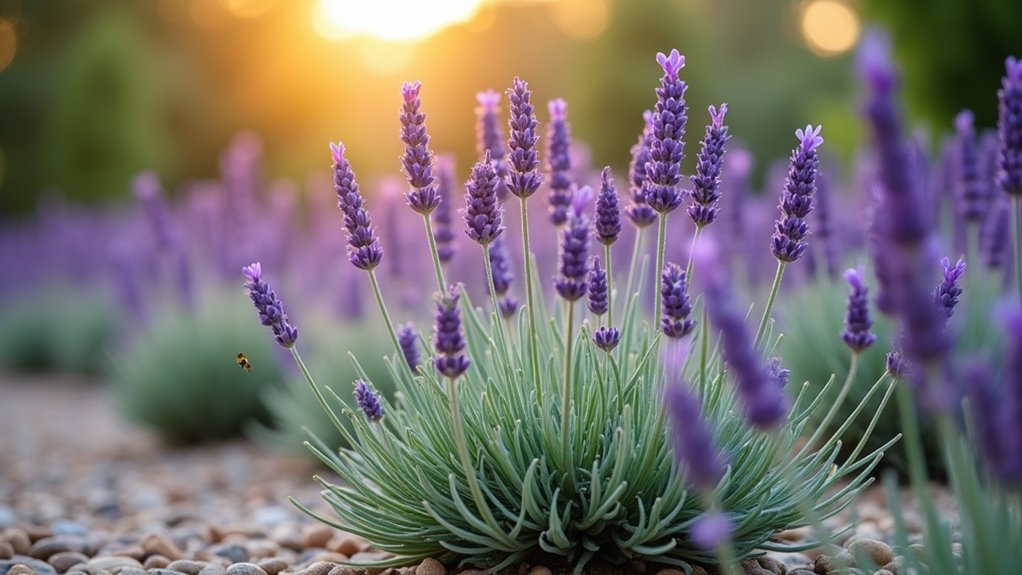
Lavender is a versatile flowering herb that brings both visual charm and fragrance to any garden with its silvery-green foliage and distinctive purple flower spikes. This Mediterranean native grows in compact, bushy mounds, typically reaching heights between 1-3 feet, making it perfect for borders, containers, or standalone features. Its aromatic blooms attract pollinators while naturally repelling many garden pests.
- Full sun exposure (6-8 hours daily)
- Well-draining, slightly alkaline soil (pH 6.7-7.3)
- Moderate spacing (18-24 inches between plants)
- Low water needs once established
- Good air circulation required
- Hardy in USDA zones 5-9
- Light, sandy or gravelly soil preferred
Regular pruning is key to maintaining healthy lavender plants. Cut back the stems by about one-third after the first bloom to encourage a second flowering, and perform a harder pruning in late summer or early fall to maintain shape and prevent the plant from becoming woody at the base.
Avoid over-fertilizing, as lavender actually thrives in lean soil, and remove any dead or yellowing stems to prevent potential fungal issues. Adding a layer of gravel mulch around the plant base helps reduce moisture retention and reflects heat upward, mimicking its natural Mediterranean habitat.
